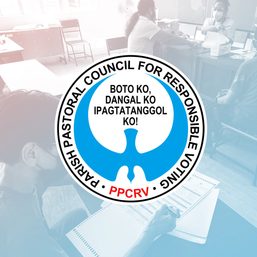SUMMARY
This is AI generated summarization, which may have errors. For context, always refer to the full article.
![[EXPLAINER] Hybrid elections: Costlier, time-consuming, error-prone](https://www.rappler.com/tachyon/2020/12/tl-hybrid-system-December-3-2020-1.jpg)
There has been a renewed and more aggressive push from some quarters in recent years for the Philippines to adopt a hybrid election system. No less than Senator Imee Marcos, chair of the Senate committee on electoral reforms, is calling for it.
The version being pushed by Senator Marcos, and originally by anti-automation advocates like Gus Lagman, seeks to revert to the manual reading and appreciation of the ballots and tallying of votes at the polling precincts. Then the results would be encoded into a computer and electronically transmitted to the next level of board of canvassers. (Lagman’s proposal was for the results to be transmitted by SMS or text messaging.)
Adopting a hybrid poll system is a decade-old conversation in election circles. It started right after our first automated elections in 2010, which critics claimed were marred by “hocus PCOS” or the supposed hacking of the Precinct Count Optical Scan machines to alter the results. The logic of many defeated politicians and anti-automation advocates was: since people couldn’t see how the machines appreciated each ballot, then the count couldn’t be trusted. As it couldn’t be trusted, then it had to be abandoned in favor of a more “transparent” system – that is, the old manual counting.
Right off, there is an assumption that the results generated by Smartmatic machines – both the PCOS and the vote-counting machines – have been fraudulent. Remember that Senator Imee’s brother, Ferdinand “Bongbong” Marcos Jr, is still contesting his loss to Vice President Leni Robredo, alleging fraud in the VCMs used in 2016.
This assumption of fraud is neither supported by facts nor substantiated by evidence. In all the protest cases filed all over the country in the 2010 to the 2016 elections, no recount of ballots have shown that Smartmatic’s machines miscounted or were proven to have been compromised. Even the completed Presidential Electoral Tribunal recount of Bongbong Marcos’ pilot precincts have shown no fraud in provinces where he claimed he was cheated.
Half a decade ago, in fact, the Commission on Elections (Comelec) already rejected Lagman’s proposed hybrid system called the PATaS (Precinct Automated Tallying System) after a time-and-motion study showed it to be costlier, time-consuming, and error-prone.
On June 27, 2015, a Comelec-assisted mock election using the PATaS was held at the Bacoor City National High School Annex in Bacoor City, Cavite, just outside Metro Manila. Four lawmakers, members of election watchdogs (including the Parish Pastoral Council for Responsible Voting), representatives of civil society organizations, and several election law practitioners were present.
Comelec’s rejection of the hybrid system centered on three findings:
- PATaS’ manual procedures wre time-consuming, taxing, and prone to errors.
- PATaS would cost more compared to systems employing the OMR (optical mark recognition) system like PCOS and VCM.
- PATaS would require amending existing laws or enacting new ones.
Echoing the inputs of other observers, the Comelec made these crucial observations in its official position paper:
- PATaS’ manual counting and manual encoding of data were more susceptible to human error.
- The pace of the counting was slow, taking 41 minutes to count 20 ballots for national positions only. Accomplishment of the election returns and tally board was also noted to be time consuming.
- To fully monitor the process, a candidate would need at least 4 watchers to check the accuracy of the following: the reading/appreciation of the ballots; tallying of the votes in the election returns; tallying of the votes on the tally board; and encoding of the votes on the laptop.
Above all, according to Comelec, adopting the PATaS would double the cost of the election from P20 billion to almost P40 billion!
And given the coronavirus pandemic, keeping so many people inside the polling precinct in 2022 and lengthening the voting process under the hybrid system would be plain stupid. Imagine the count for national positions alone would take 20 continuous hours for precincts with 600 ballots. This could double to 40 hours if local positions would also be counted. In contrast, under the automated counting setup that we have been using, results are generated instantly upon the closing of the polls.
With nothing to gain, but with so much to lose, from a hybrid electoral system, the continued push for it doesn’t make sense.
Yet, as confirmed by Senate President Tito Sotto, an unnamed senator had been pushing for insertions in the 2021 budget bill to mandate the Comelec to abandon Smartmatic’s current system and to use new machines and software. The terrible thing about the insertion is it authorizes the poll body to disable the safeguards and waive the minimum standards set in the automated election law. Republic Act 8436, as amended by RA 9369, requires in Section 12 that the chosen election system be previously tried and tested in an actual election.
There is so far no way to confirm if this insertion was sneaked to accommodate Marcos and Lagman’s hybrid system, which has not been used or tested in an actual election. However, my bigger problem with disabling the safeguards and waiving the minimum standards set in the law is it will make our election system less secure and more susceptible to fraud. If we don’t watch this closely, it can be an opening to massive election fraud in 2022, when we will elect the next president of the country. – Rappler.com
Emil Marañon III is an election lawyer specializing in automated election litigation and consulting. He is one of the election lawyers consulted by the camp of Vice President Leni Robredo. Marañon served in Comelec as chief of staff of the late Comelec Chairman Sixto Brillantes Jr. He graduated from the SOAS, University of London, where he studied Human Rights, Conflict, and Justice as a Chevening scholar. He is a partner at Trojillo Ansaldo and Marañon (TAM) Law Offices.
Add a comment
How does this make you feel?




![[PODCAST] Beyond the Stories: Ang milyon-milyong kontrata ng F2 Logistics mula sa Comelec](https://www.rappler.com/tachyon/2021/11/newsbreak-beyond-the-stories-square-with-topic-comelec.jpg?resize=257%2C257&crop_strategy=attention)
There are no comments yet. Add your comment to start the conversation.